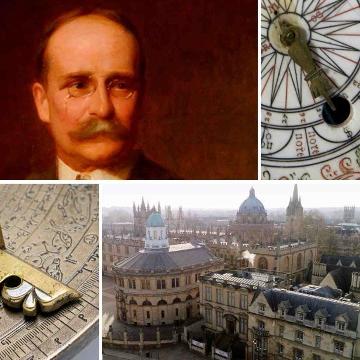What is the History of Science Museum?
History of Science focuses on the creation and exchange of knowledge throughout human history. It sits at a fascinatingly rich – and often overlooked – nexus between the humanities, sciences, social sciences and visual arts.
In fact, it was a newly emerging research area a century ago when businessman and independent scholar Lewis Evans joined forces with Dr Robert Gunther, the History of Science's first Director, as they lobbied to found the UK’s first dedicated History of Science Museum.
The range of scientific instruments in the museum's founding collection embodies, like no other, the centuries of meticulous scholarship, technical skill and artistry required both to make and use them.
Bringing research to life
That is why we are bringing that scholarship to life at our 100th birthday event in the Weston Library on Sunday 3 March. Our friend and colleague, Dr Taha Yasin Arslan, Deputy Director of the Institute for the History of Science at Istanbul Medeniyet University, is flying in from Turkey to run our Astrolabes Live! Workshop. Taha’s research involves making accurate replicas of scientific instruments in order to understand their construction and the challenges makers faced over the centuries. It has revealed so much about many techniques and working practices hitherto lost or forgotten.
At our pop-up workshop, Taha will be making part of an astrolabe using original techniques and inviting visitors to have a go themselves.
About Time
Taha’s research also resonates with the experience of Lewis Evans, who donated the museum's founding collection 100 years ago.
Opening on Saturday 2 March in the History of Science Museum, the new display celebrates both Lewis’ journey and – most importantly – the myriad people, cultures and histories at the heart of the collection.
Brother of famed archaeologist Arthur Evans, Lewis followed his father into the family papermaking business. However, that did not stop him pursuing his love of research and scholarship.

Clockwise from the top left: portrait of Lewis Evans; Ivory sundial (Inv. 41986); aerial view of the History of Science Museum; Astrolabe (Inv. 37148)
Aged 16, he became fascinated by a sundial gifted to him by his father. Beyond just admiring its beauty, he was determined to understand how it worked, where it came from, who made it and why. That is why Lewis spent half a century collecting not just dials, astrolabes and globes, but also books, manuscripts and instruction manuals contemporaneous with those objects. He methodically built up a body of research and a rich network of contacts.
As he discovered, telling the time by the light of the moon or position of the stars is complex, and takes years of data collection and calculation. But these stunningly beautiful, sophisticated instruments make finding the answer simple. By studying both objects and manuscripts together, Evans was reconnecting with a phenomenal body of knowledge that is largely lost to most of us today. By the time he donated his collection to the University in 1924, that curious teenager had become not just a successful businessman, but one of the most sought-after independent scholars in his field.
The Museum's Lewis Evans curator, Dr Sumner Braund, will be sharing her research findings at a talk in the Weston Library on Sunday 3 March at 3pm. Free tickets are available online.
History in your hand
A few years ago, I shared with a visitor my excitement about how you can discover the history of the Renaissance by examining one ivory sundial from 1500s Nuremberg.
The visitor was so intrigued that he is now a valued supporter and friend of the Museum.
And that is what makes the History of Science Museum’s collections and research so distinctive, so unusual and so important. Because the world’s many histories of science are the histories of us.